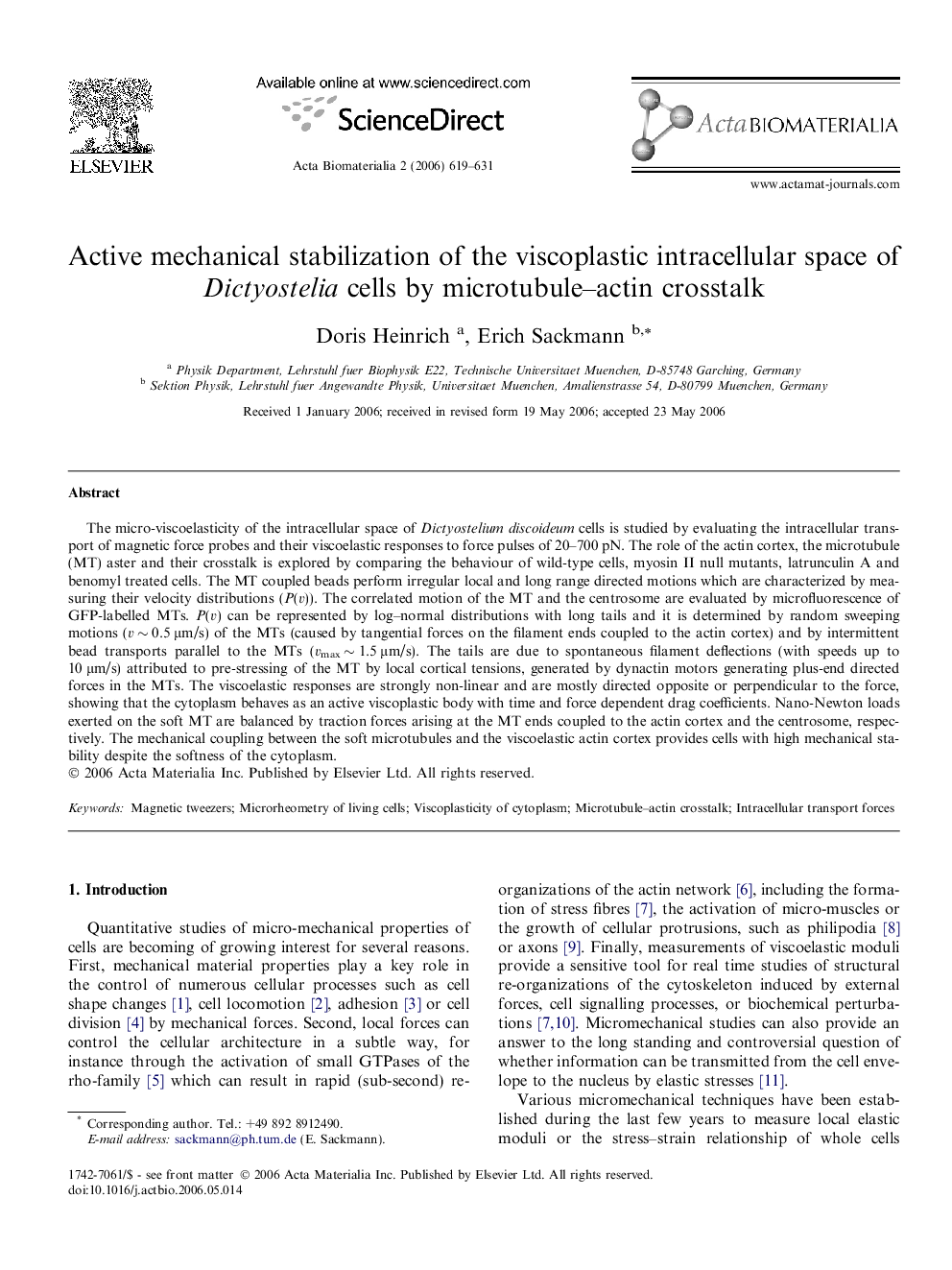| Article ID | Journal | Published Year | Pages | File Type |
|---|---|---|---|---|
| 2628 | Acta Biomaterialia | 2006 | 13 Pages |
The micro-viscoelasticity of the intracellular space of Dictyostelium discoideum cells is studied by evaluating the intracellular transport of magnetic force probes and their viscoelastic responses to force pulses of 20–700 pN. The role of the actin cortex, the microtubule (MT) aster and their crosstalk is explored by comparing the behaviour of wild-type cells, myosin II null mutants, latrunculin A and benomyl treated cells. The MT coupled beads perform irregular local and long range directed motions which are characterized by measuring their velocity distributions (P(v)). The correlated motion of the MT and the centrosome are evaluated by microfluorescence of GFP-labelled MTs. P(v) can be represented by log–normal distributions with long tails and it is determined by random sweeping motions (v ∼ 0.5 μm/s) of the MTs (caused by tangential forces on the filament ends coupled to the actin cortex) and by intermittent bead transports parallel to the MTs (vmax ∼ 1.5 μm/s). The tails are due to spontaneous filament deflections (with speeds up to 10 μm/s) attributed to pre-stressing of the MT by local cortical tensions, generated by dynactin motors generating plus-end directed forces in the MTs. The viscoelastic responses are strongly non-linear and are mostly directed opposite or perpendicular to the force, showing that the cytoplasm behaves as an active viscoplastic body with time and force dependent drag coefficients. Nano-Newton loads exerted on the soft MT are balanced by traction forces arising at the MT ends coupled to the actin cortex and the centrosome, respectively. The mechanical coupling between the soft microtubules and the viscoelastic actin cortex provides cells with high mechanical stability despite the softness of the cytoplasm.
